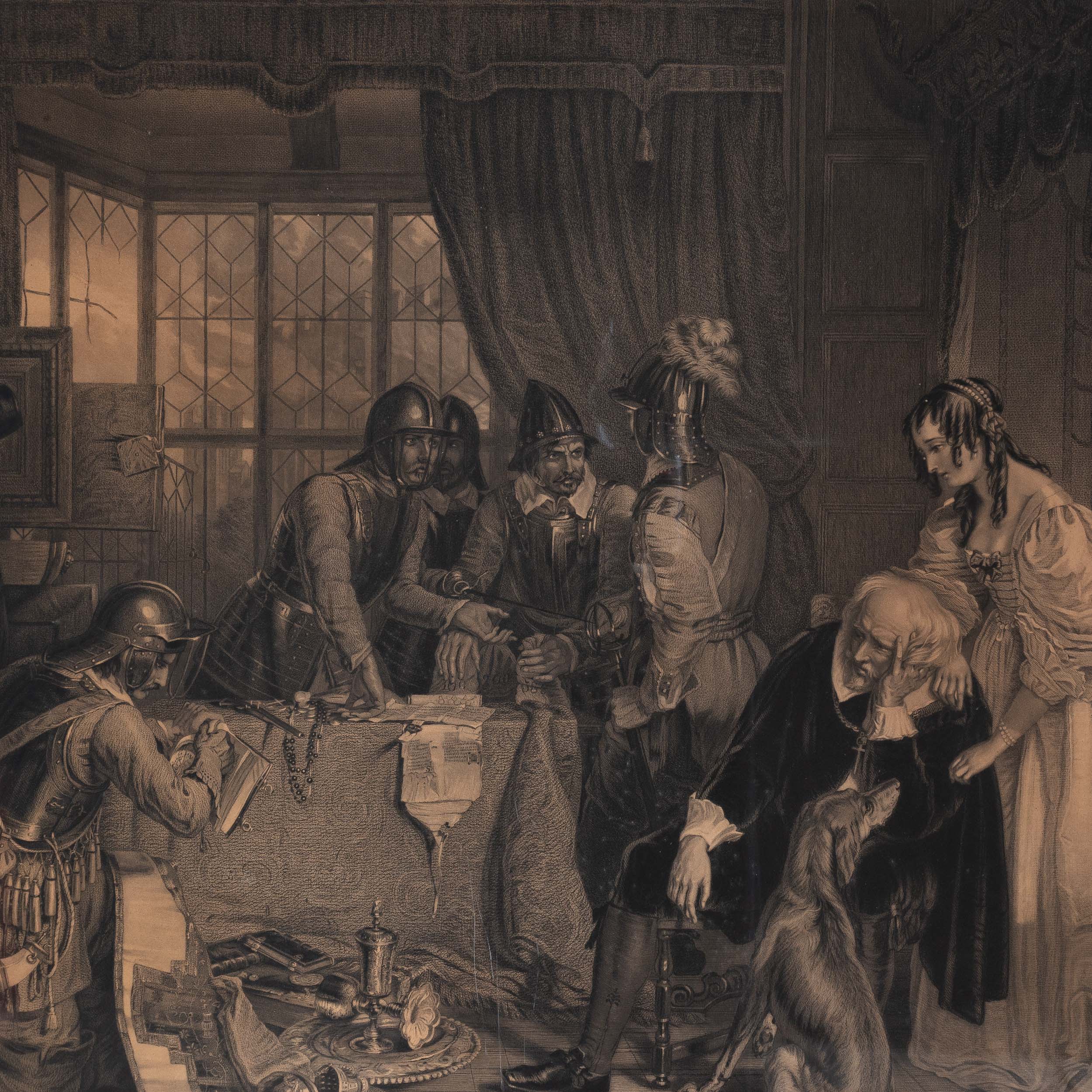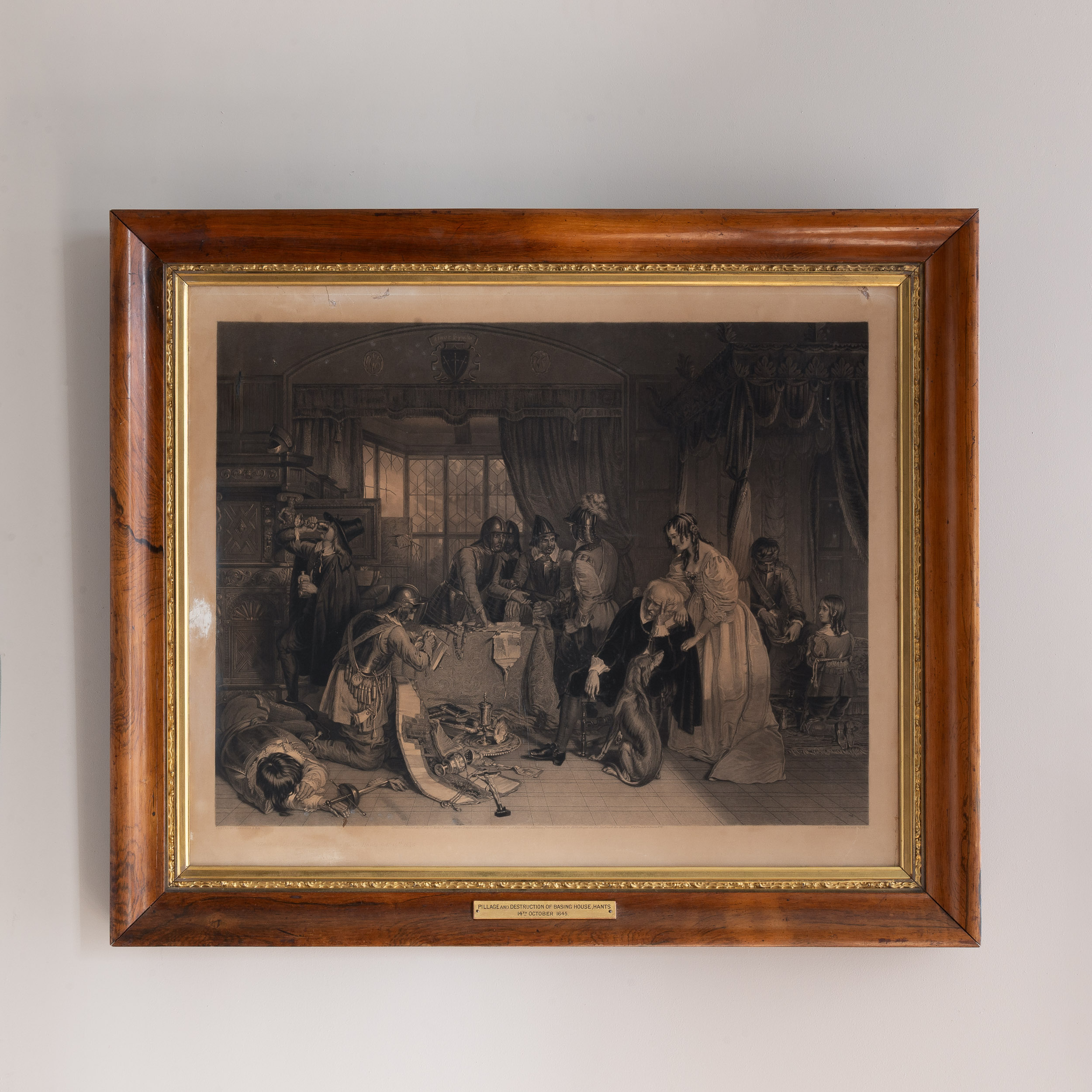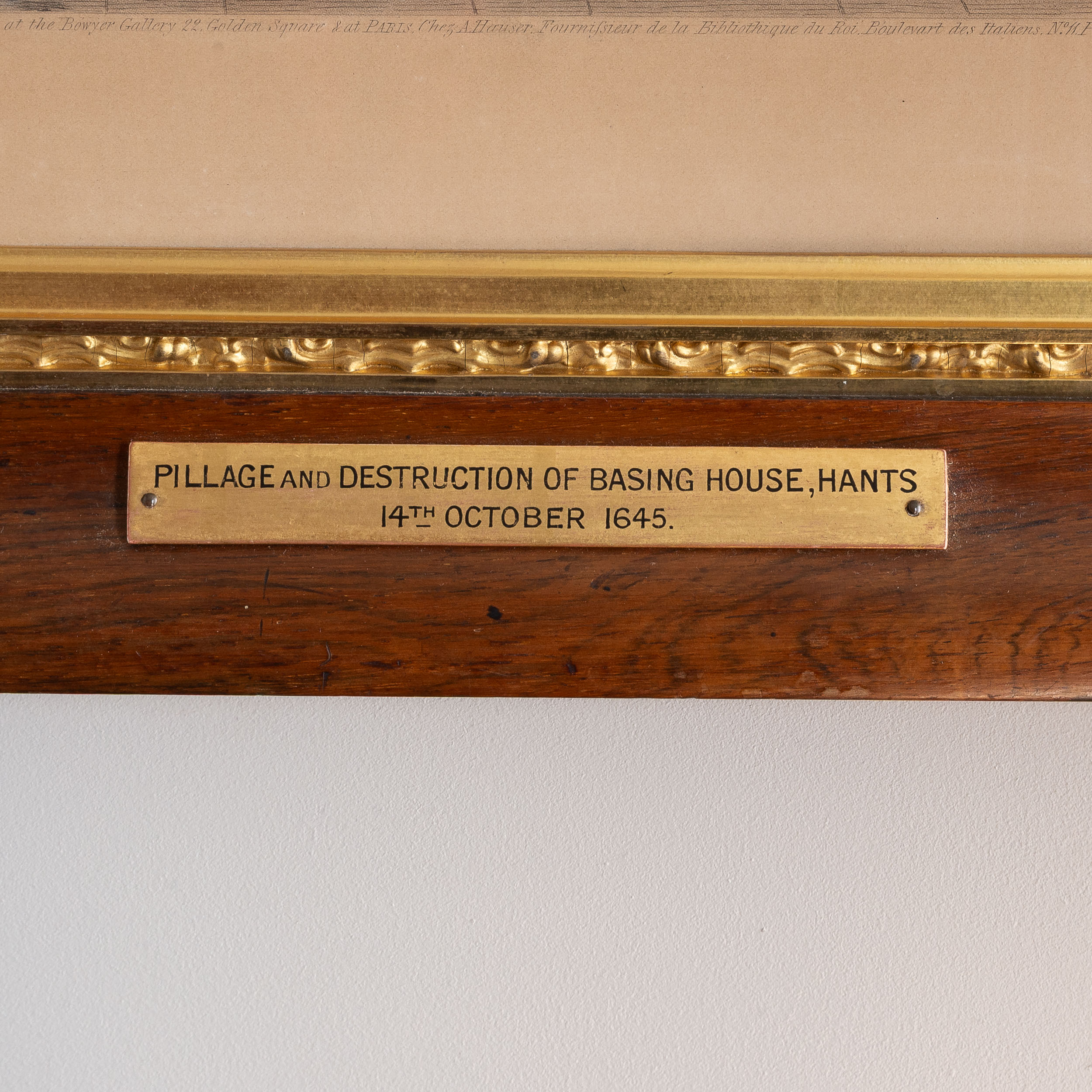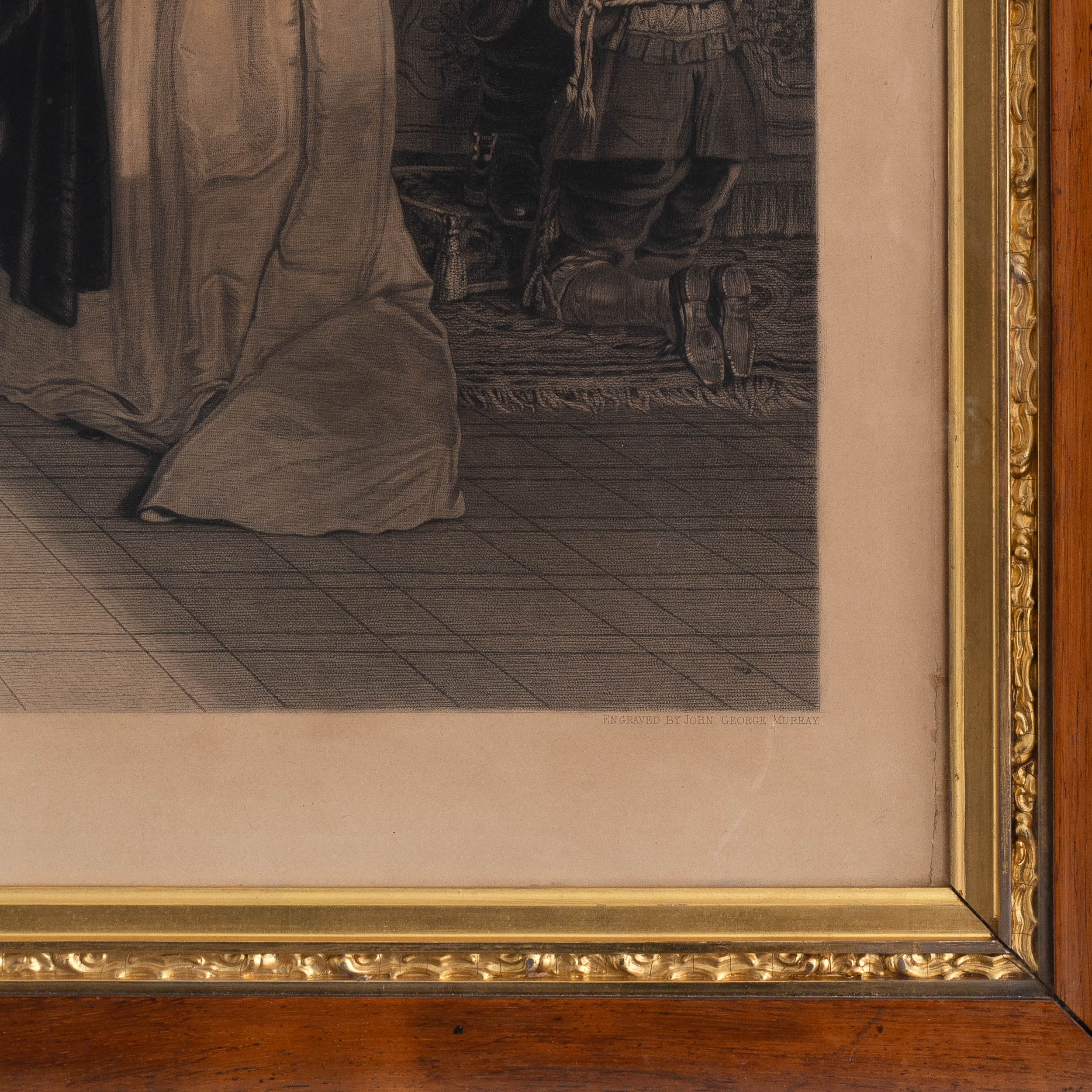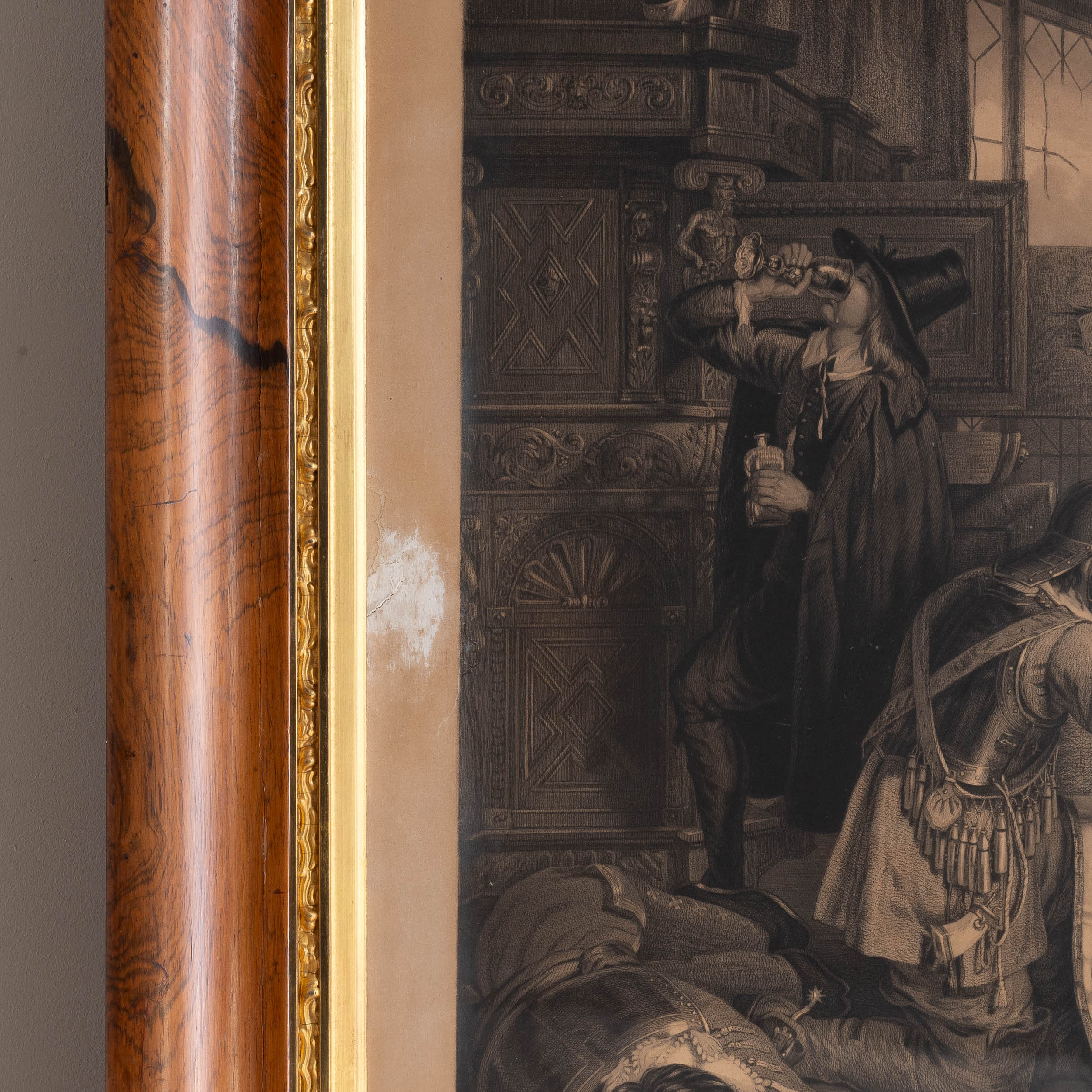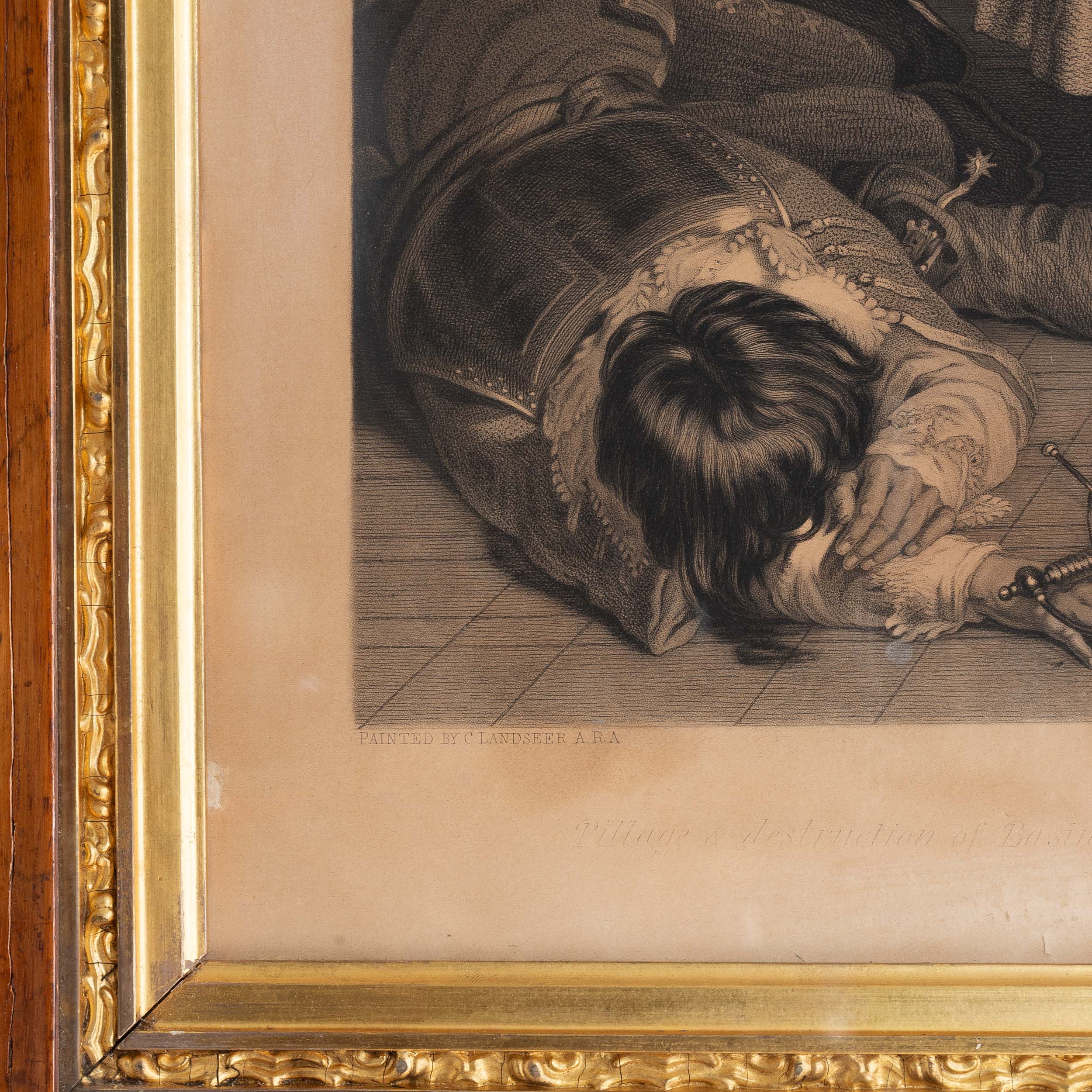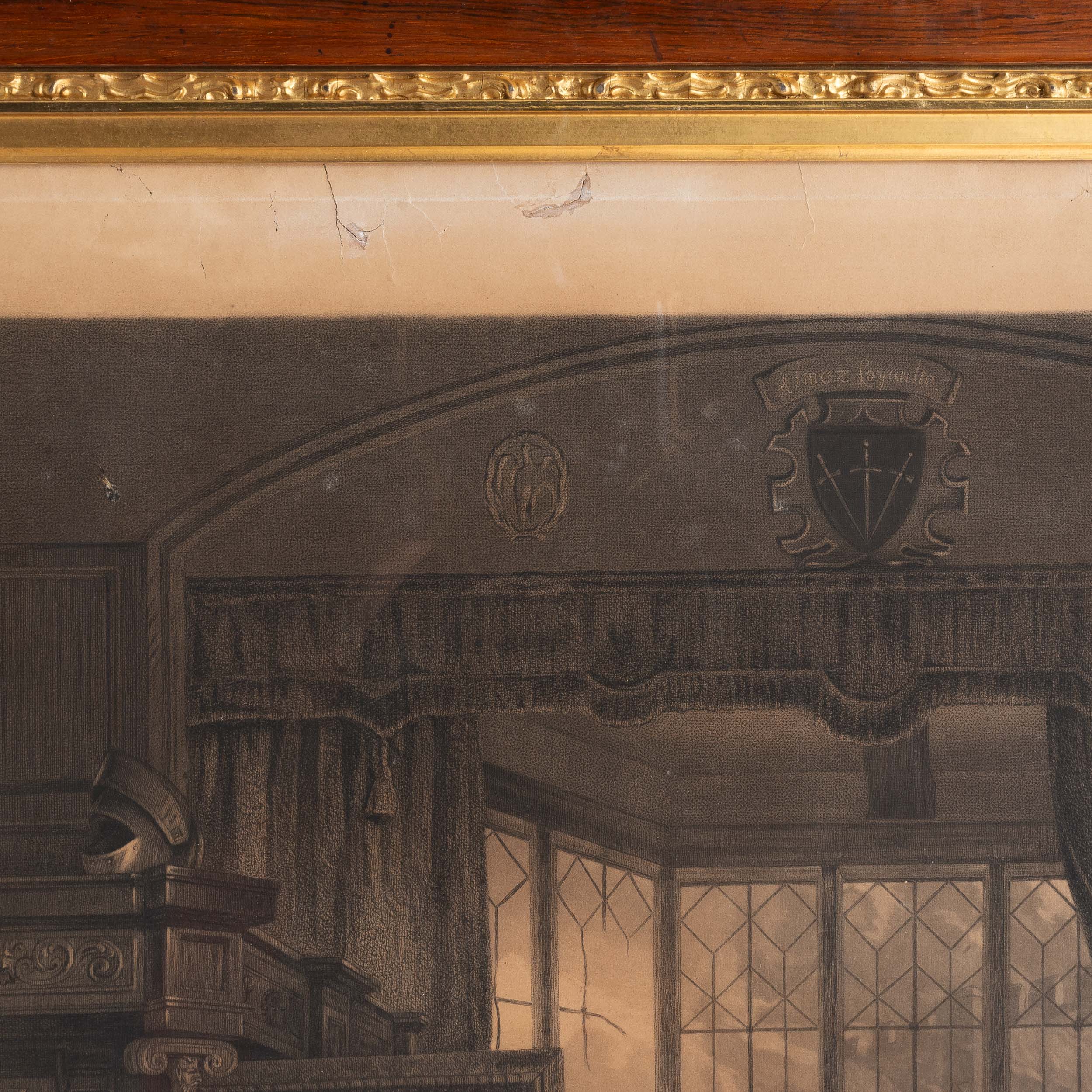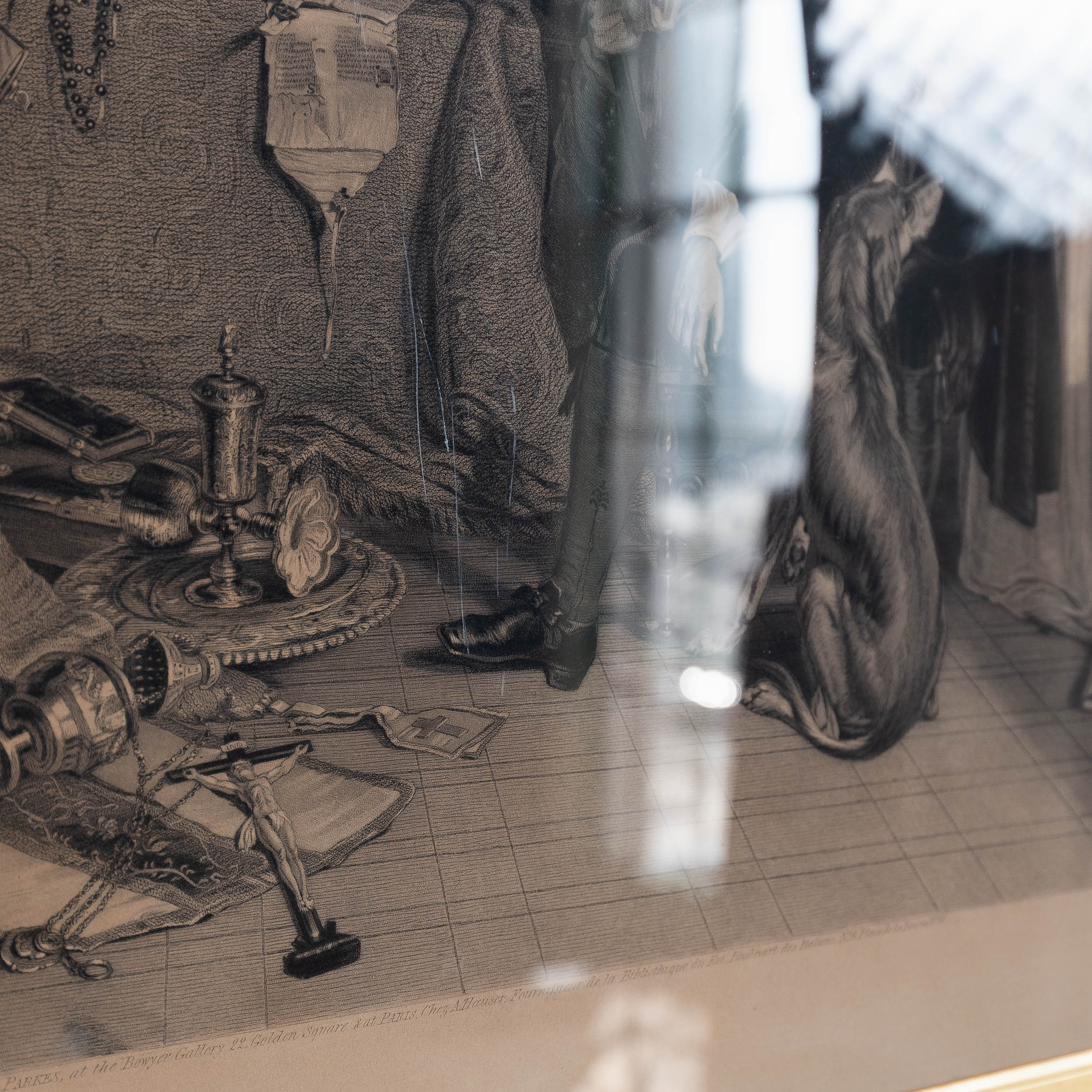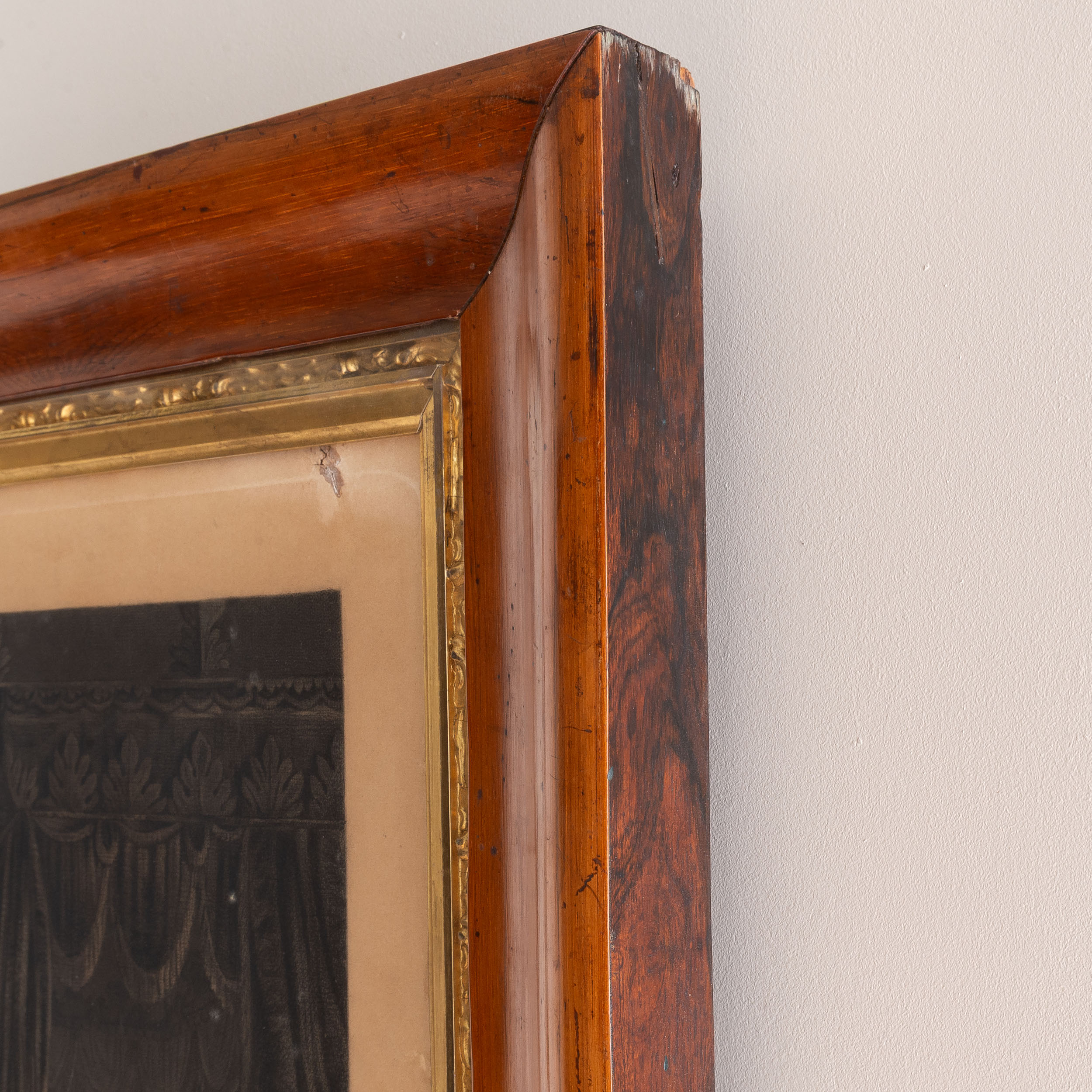Click and Collect – Please contact us to arrange collection or delivery of this item
Pillage and Destruction of Basing House, Hants,
A Mid Victorian engraving by the London artist and printmaker John George Murray after an original oil painting by Charles Landseer showing the plundering of Basing House during the English Civil Wars.
Mounted and framed in a walnut ogee profile with foliated gilt slip.
£350
In stock
In 1645, the Royalist garrison of Basing House in Hampshire, after three separate sieges and the loss of almost 3,000 men, was at last overrun by Parliamentarian forces under Oliver Cromwell.
Cromwell and his rebels had counted on their numbers and heavy guns to overawe the dogged defenders of the fortified mansion, led by John Paulet, 5h Marquess of Winchester. In fact, the Parliamentarians were compelled to fight Winchester’s men room-to-room with quarter neither asked nor given.
The booty from the sack of the Marquess’s mansion was estimated at £200,000, over £40,000,000 in today’s money.
The painting represents the sacking of one of the chambers in Basing House. The main group to the right consists of Royalist prisoners. The Roundhead troopers are shown either stealing or destroying Winchester’s goods, consisting of Roman Catholic books, priests’ vestments, gold and silver plate and cash. The corpse on the left is that of Major Robinson, physician and military aide to the House of Winchester who was summarily executed by Parliamentary soldiers.
Also shown, quaffing claret from a silver goblet, is the notorious Puritan Divine Hugh Peters who was present at the sack of Basing and would later play a bit-part in the justification of the regicide of Charles I. In earlier life he had stood as a founder of Harvard University in New England. He was himself executed after the Restoration.
The newly liberated Parliamentary soldier Colonel Robert Hammond is also shown in heated argument with his men over the life of the seated Marquess of Winchester and his daughter. Hammond did eventually win a reprieve for the Marquess who had in turn been Hammond’s own gaoler.
The original painting by the Victorian history painter Charles Landseer is now in the possession of the Tate Gallery.

